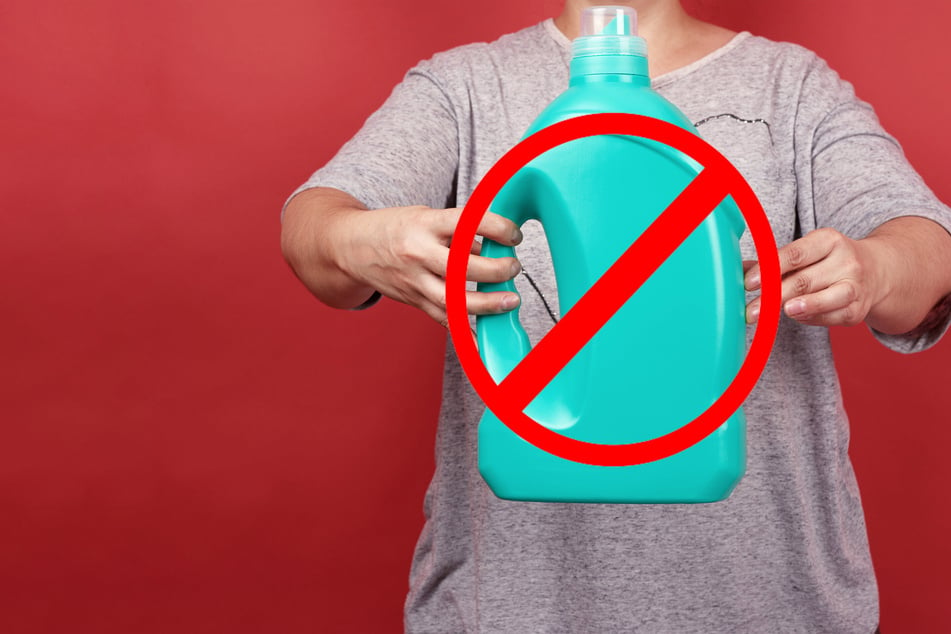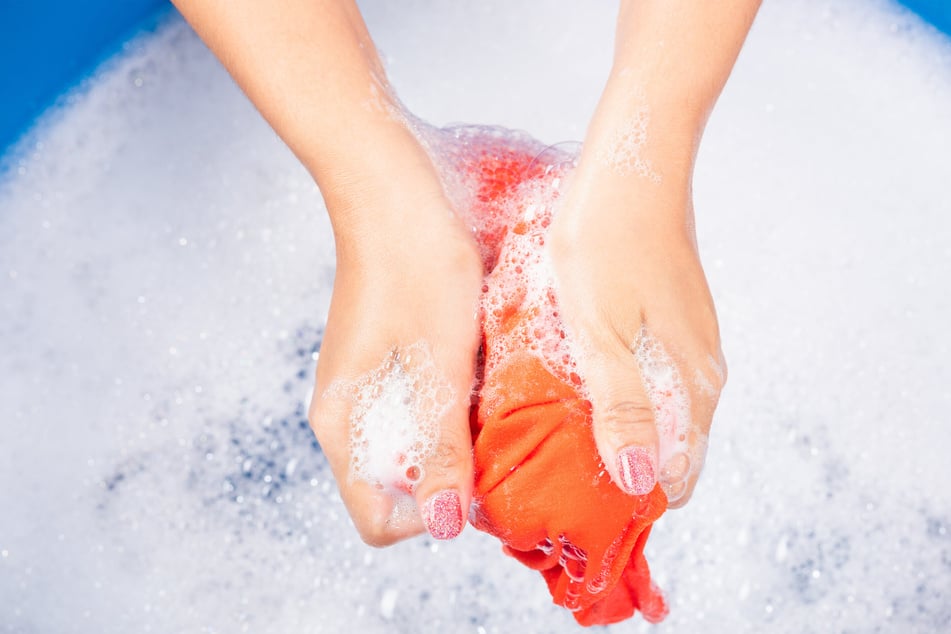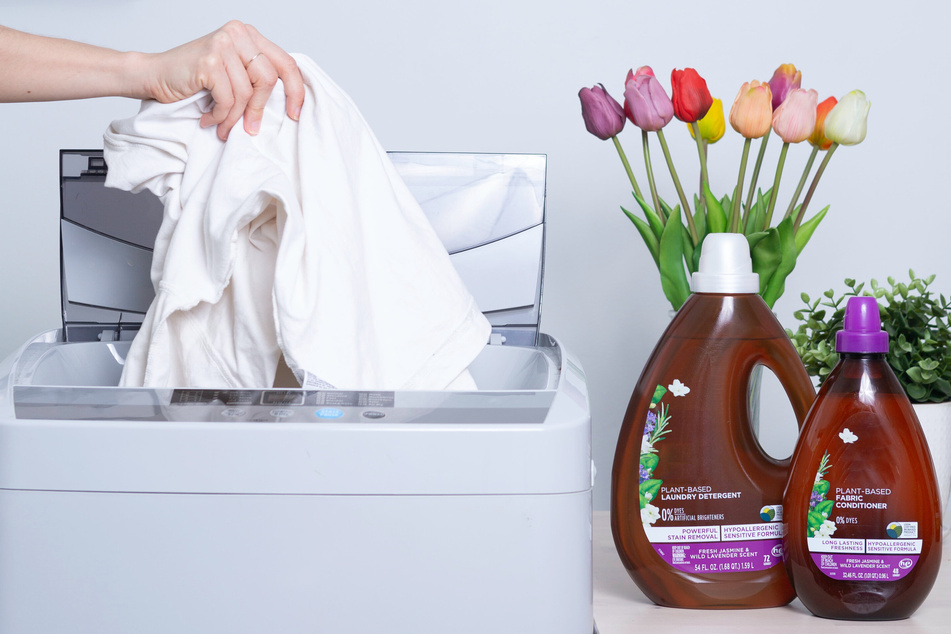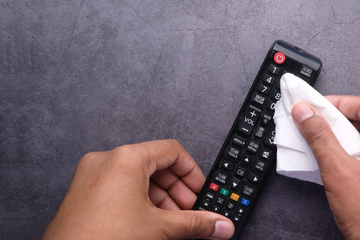Homemade laundry detergent: Cheap DIY eco-friendly sustainable detergent recipe
Anyone who is concerned about the environment will know how terrible commercial detergent can be, and also how expensive. Is there any way to make your own DIY eco-friendly laundry detergent, though? Let's find out!

Whether you are doing your laundry by hand or with a washing machine, problems with the way we wash go far further than tedium. Commercial detergents contain all sorts of nasty chemicals and microplastics, which can easily get into our waterways. One way to mitigate this problem is to simply make your own laundry detergent.
In this lifestyle guide, TAG24 will dive into the weird and wacky world of homemade laundry detergent. How can you make cheap, eco-friendly, sustainable DIY detergent? Here's our recipe!
Ecological impact of laundry and washing up detergents
Commercial laundry detergents contain a variety of different chemicals that have severely damaging environmental effects. When pumped into water lines, these chemicals can play a significant role in the growth of destructive algae in our lakes and water sources.
It has been acknowledged that detergents used for laundry release nitrogen into the water, which then reacts with phosphorous to create certain nutrients. The resulting chemicals stimulate the growth of algae which, once amassed to a certain quantity, will deplete the water source's oxygen levels and cause severe ecological damage.
This is not the only ecological impact of laundry detergent, though. Laundry detergents also contain chemicals called surfactants. According to the United States Environmental Protection Agency, these surfactants are known to be deadly for many different forms of underwater life. They also make it easier for the water to absorb other pollutants, making matters even worse.
So, to summarize: Laundry detergents consist of a variety of different chemicals, many of which have a terrible environmental impact. They kill fish, they assist in the growth of algae, and they make it easier for things like pesticides to infect a water source.
Plastic free laundry detergent is also important
Indeed, we haven't even mentioned microplastics yet. Unless you buy specifically microplastic-free detergent (we will cover that later), every time you wash your clothes, you will release approximately 2.5 million microbeads of plastic into our waterways. These plastics kill fish and destroy ecosystems.
As a result of the devastating environmental impact this has, the FDA introduced the Microbead-free Waters Act in 2015. The problem, though, is that the act only covers the use of microbead plastics in cosmetic goods, not things like laundry detergent or body soap.
Why to make your own detergent
Laundry detergent is strong stuff that pollutes the environment and tends to be on the pricey side these days. While it might seem a little difficult to make your own detergent, you can rest assured that you have done your part to help solve a worldwide problem and (hopefully) save a few pennies in the process.
With just a few ingredients, you can produce a laundry detergent that will get the job done. It's worth mixing this up a few times, try out what you like, and see if you save some money while doing so.
Hot tip: If you're into making your own detergent, you may be interested in experimenting with different ways of doing the laundry.
DIY eco-friendly laundry detergent recipe
Your best bet when making laundry detergent is to create a soap-like paste out of a few different ingredients. This detergent paste can then be placed into the washing machine like. you would toss in a tablet or pod. After this, all you need to do is turn it on a normal cycle. Making a DIY eco-friendly laundry detergent is super easy with this recipe, and uses basic and cheap household products.
DIY laundry detergent recipe | Ingredients
- Organic soap with a nice fragrance (one bar)
- Baking soda (1 cup)
- Citric acid powder (1/2 cup)
- Epsom salts (1/5–1/4 cup)
DIY laundry detergent recipe | Instructions
Step 1: Set aside a cheap cheese grater or a microplate only to be used for your soap. Grate your soap as you would cheese so that it creates a pile of soap slivers.
Step 2: In a large bowl, add the grated soap, along with all the other ingredients and mix thoroughly with a wooden spoon until well combined.
Step 3: Add the mixture to a (easily cleanable) food processor and give it a good blast. You want it to be a relatively smooth paste.
Step 4: Store it in an airtight container for as long as you want, and use a few tablespoons with each load.
If you are having little-to-no luck with this mixture, add about a cup of (organic) washing soda to the mixture before you give it another spin.
Be careful: When choosing your soap, make sure that it doesn't contain any dyes or coloring that could get into your clothes. Try to pick a neutral-colored soap that is organic (so, you know, you are being eco-friendly) and has a nice fragrance.

Homemade powdered detergent with baking soda
To make a powdered version of our classic homemade eco-friendly washing detergent, simply skip the step in our recipe where you chuck it in a blender. Simply mix the ingredients together with a big spoon so that it is a massive powdery mass and then simply use it as you would a normal powder detergent.
There is no definitive reason to go for a paste over a powder. It just depends on your machine and user preference.
Homemade liquid laundry detergent
If you don't want to use a paste-like substance when you are doing your washing, it's a good idea to make yourself some liquid detergent instead. With a little bit of effort, you will quickly have liquid laundry detergent that is eco-friendly, safe, and smells fantastic.
Eco-friend liquid laundry detergent recipe | Ingredients
- Liquid hand-soap, color-free and natural (one small bottle)
- Water (10 cups)
- Baking soda (1/2 cup)
- Borax (1/2 cup)
- Some essential oils for fragrance (a couple of drops)
Eco-friend liquid laundry detergent recipe | Instructions
Step 1: In a large pot, bring the water up to a boil. Once it is boiling, remove it from the heat.
Step 2: Add the borax and baking soda and mix thoroughly until completely dissolved.
Step 3: Now, mix in the soap and oils and whisk firmly until everything has melted in and combined well.
Step 4: Once it isn't too hot, but before it has gone cold (it will thicken up quite a lot), slowly pour it into a jar or a jug that you can seal closed.
So, how do I use it? Give the mixture a little stir before each wash and then simply use it as you would use normal detergent. Use around a 1/2 cup per load.
Best eco-friendly laundry detergents

If you neither have the time nor the energy to make your own eco-friendly laundry detergents, there are plenty of other options for you. Most big supermarkets will host a variety of name-brand products, and each brand has a variety of options available. Nowadays, big brands like Tide have a selection of ecological products.
The most important thing to look for is the little label that tells you it's microplastics-free. If you can't find it, it probably isn't microplastics-free, even if it's organic. Look for the ingredients and research them to find a commercial laundry detergent that won't hurt the environment.
The downside: Well, the problem with truly organic laundry detergent is that it can get very expensive when compared to more standard products. Often the ingredients that they use are more expensive to produce and, of course, the "organic" label itself will often cause up-pricing.
Sustainable detergent offers a zero waste laundry detergent solution
Laundry detergent is expensive stuff that tends to hurt the environment. Can we get rid of it completely? Well, no, but you can make your own detergent that's eco-friendly and relatively effective. It will also be cheaper, more customizable, and will produce little-to-no waste. What's the downside?
Well, it can be a time-consuming and difficult process. With any luck, you won't be dealing with any dangerous chemicals, but it is certainly not easy to make your own detergent. In other words, it comes down to a choice: convenience or eco-friendly?
Cover photo: 123RF / Tatkrav & IMAGO / Panthermedia (TAG24 Edit)



